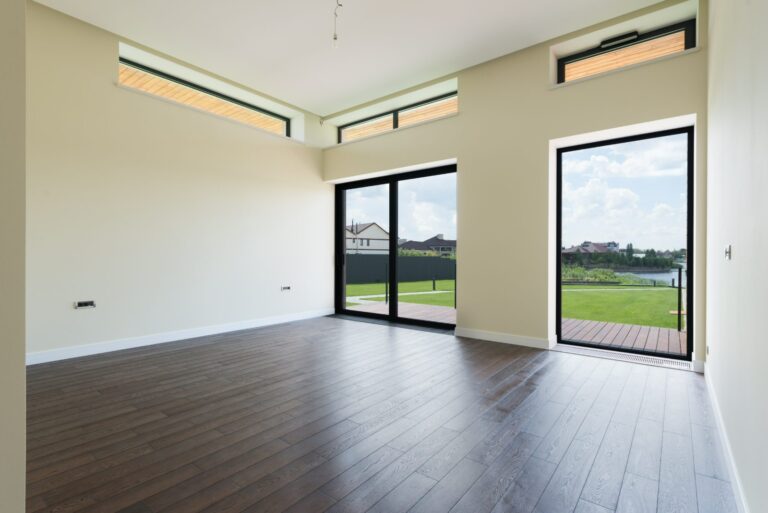
The Pros and Cons of Laminate Flooring: Is It Right for You?
Laminate flooring has become a popular choice for homeowners looking to balance style, durability, and affordability. But, like any flooring option, it comes with its own set of advantages and disadvantages. If you’re considering laminate for your home, this guide will help you weigh the pros and cons so you can make an informed decision.
The Pros of Laminate Flooring
1. Affordable and Budget-Friendly
One of the biggest advantages of laminate flooring is its cost-effectiveness. Compared to hardwood, tile, or luxury vinyl, laminate is a budget-friendly option that doesn’t compromise on aesthetics. You can achieve the look of real wood or stone at a fraction of the price, making it an excellent choice for homeowners on a budget.
2. Durable and Scratch-Resistant
Laminate flooring is designed with durability in mind. Its tough wear layer makes it highly resistant to scratches, dents, and stains, which is perfect if you have kids or pets. This durability allows it to withstand high foot traffic areas like living rooms, hallways, and entryways without showing signs of wear.
3. Easy to Install
Laminate flooring features a click-and-lock installation system, making it a popular DIY project for homeowners. You don’t need any special tools or adhesives to install it, and it can be laid over existing flooring, such as concrete or tile, without much preparation. This saves both time and labor costs.
4. Low Maintenance and Easy to Clean
Unlike hardwood that requires refinishing and special care, laminate flooring is low maintenance. It’s easy to clean with just regular sweeping and occasional damp mopping. The sealed surface prevents dust and allergens from being trapped, making it a great option for allergy sufferers.
5. Wide Variety of Styles
Laminate flooring comes in an array of colors, patterns, and finishes that mimic the appearance of natural wood, stone, or tile. Whether you prefer a rustic oak look or sleek modern tiles, you can find a laminate option to suit your home’s aesthetic.
The Cons of Laminate Flooring
1. Susceptible to Water Damage
While laminate is moisture-resistant, it’s not completely waterproof. Prolonged exposure to water or spills can cause the boards to swell or warp. This makes laminate a less suitable option for areas prone to moisture, like bathrooms or basements. For these spaces, consider water-resistant alternatives like luxury vinyl plank (LVP).
2. Cannot Be Refinished
Unlike hardwood, which can be sanded down and refinished multiple times, laminate flooring cannot be refinished. Once the surface is scratched or damaged, you’ll need to replace the affected boards. This can be a drawback if you’re looking for flooring that will last for decades.
3. Can Feel Less Authentic
While laminate has come a long way in replicating the look of wood or stone, it still may lack the authentic feel and texture of natural materials. Some homeowners may find that the synthetic surface doesn’t quite match the warmth and character of real wood flooring.
4. Limited Sound Absorption
Laminate flooring can be noisier than other flooring options due to its hard surface. Without proper underlayment, it may produce a hollow sound when walked on. If soundproofing is a concern, especially in upstairs rooms, consider adding an underlayment layer to reduce noise.
Is Laminate Flooring Right for You?
Stylish and Cost-Effective Solution
Laminate flooring delivers a sleek, modern look without breaking the bank, making it an excellent choice for homeowners prioritizing style on a budget.
Ideal for Low-Moisture Areas
Perfect for living rooms, bedrooms, and hallways, laminate is a great option where moisture is minimal, providing a durable and attractive flooring choice.
Considerations for Moisture-Prone Spaces
While laminate is versatile, it’s less suited for bathrooms or kitchens. For areas with high moisture, explore other options like vinyl or engineered hardwood.
If you’re still on the fence, consulting with a flooring expert can help you decide if laminate is the best fit for your needs.
At ALL WOOD FLOORS, we’re here to guide you through every step of the process, from selection to installation. Contact us today to explore our wide range of flooring options and find the perfect fit for your home!
Services
- Hardwood
- Vinyl
- Laminate
- Repair
- Refinish Sanding
- Engineer & LVP
Information
Aurora, CO
info@allwoodfloors.online
(720) 951-3987


